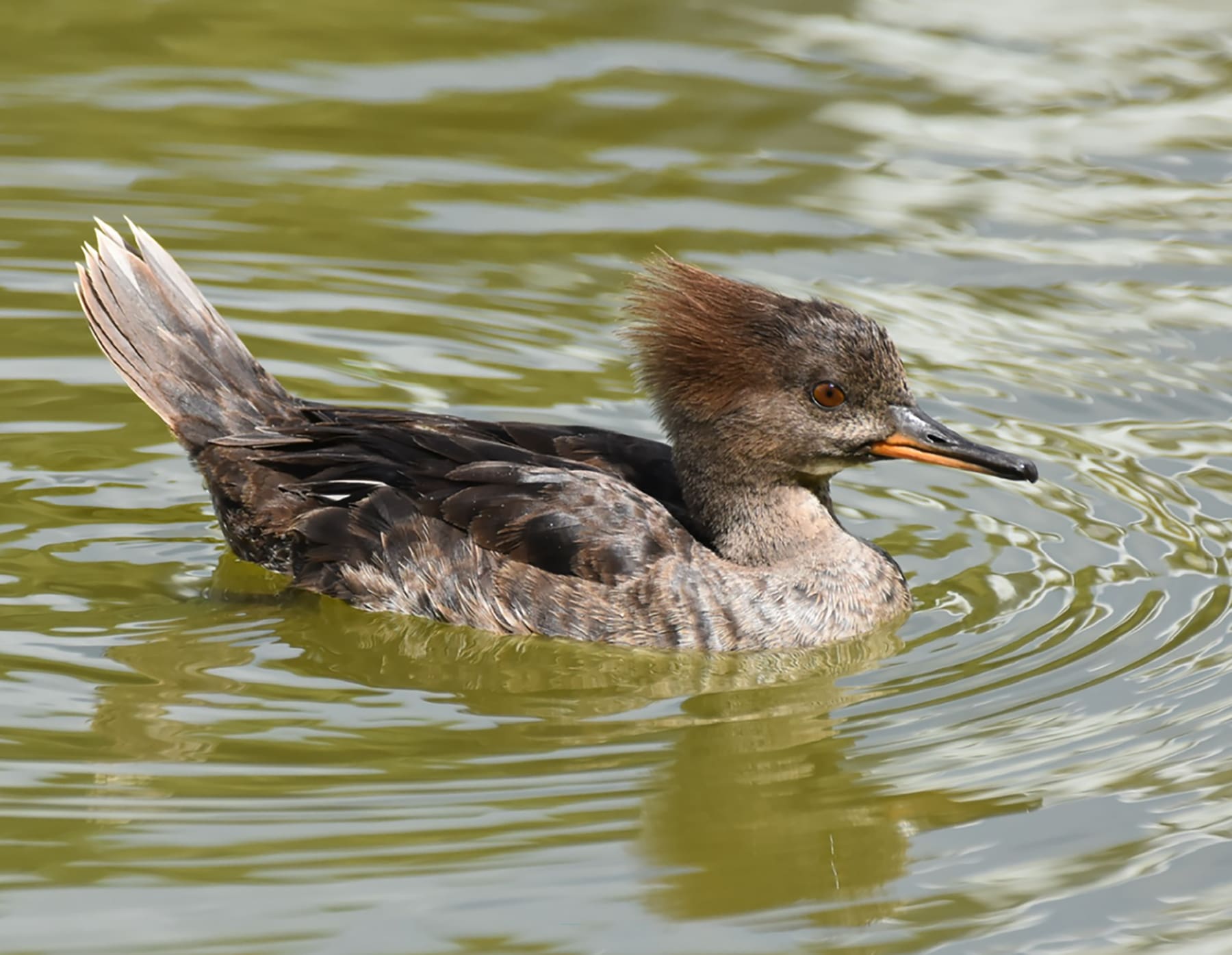
At Francis Bay, we were thrilled to spot a group of four Hooded Mergansers diving for fish in the deepest part of the pond. I had never seen one before.
Laurel Brannick recognized them by their fuzzy, back-combed crests. An adult male in breeding plumage has an unmistakable black and white hood. Since these were cinnamon colored, I thought they were probably females, though it is possible they were immature males. I didn’t get any close-up pictures then but then later found one posing nicely at the edge of the pond at Frank Bay. They might have moved over there because the Francis Bay pond has been getting a bit shallower as the weather becomes drier.
The Hooded Mergansers normally breed in the northern part of the U.S. and Canada, and then in the winter head down to the southeast states. It is quite unusual for them to come into the Caribbean, so these are real adventurers. But not the first to come. There was one recorded on St. John in 2008, and one on St. Croix in 2004.
I had never seen a Ring-necked Duck either. However, when I was going through my photos, I saw an unidentified head with a yellow eye. After I shared it with Laurel, we decided it was this other type of rare duck.
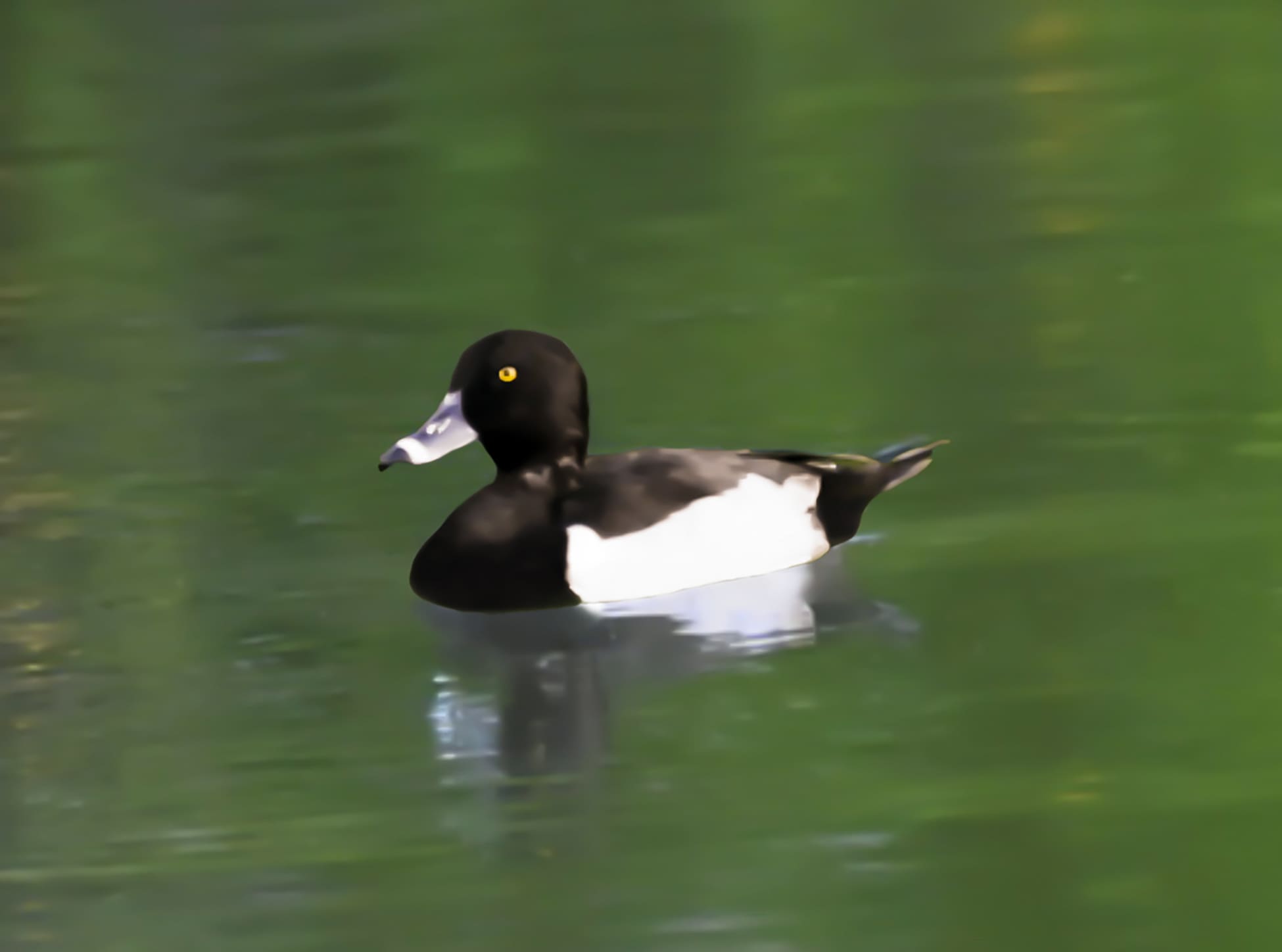
Then we also spotted a female Ring-necked Duck, which has a very different eye — dark with a white ring around it.
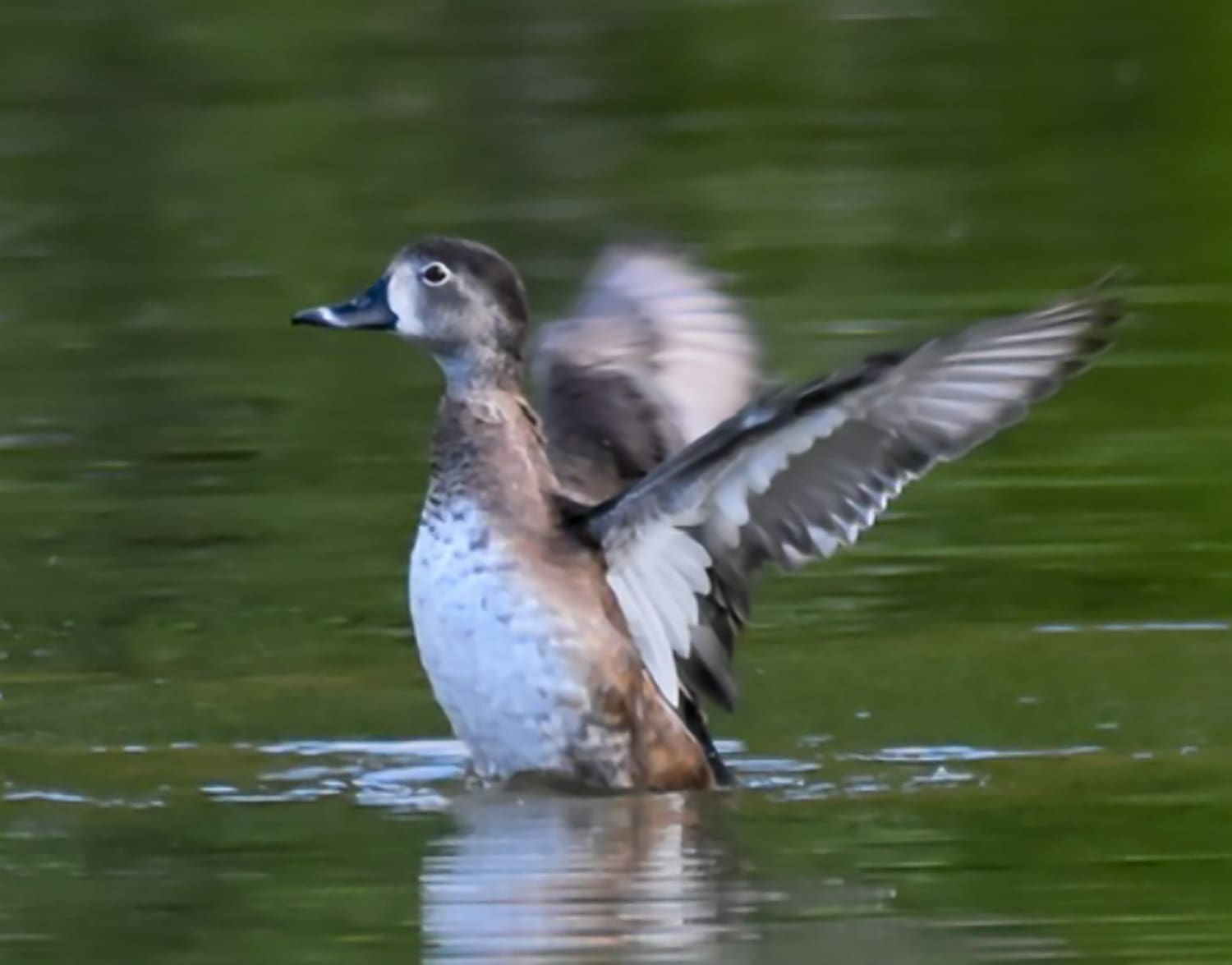
Unlike the mergansers, these Ring-necked Ducks are more frequently seen in the Caribbean. Yet they are still not common in the Virgin Islands, so we were excited to be able to include them in the annual bird count. Unlike the mergansers, they mostly eat aquatic vegetation rather than fish.
A couple of Ruddy Ducks were also sharing the pond on Christmas count day. They dive down and forage by pushing their bills along the bottom to collect aquatic vegetation, insects and small crustaceans. They are more regular winter visitors on St. John, and a few have nested as close as Puerto Rico.
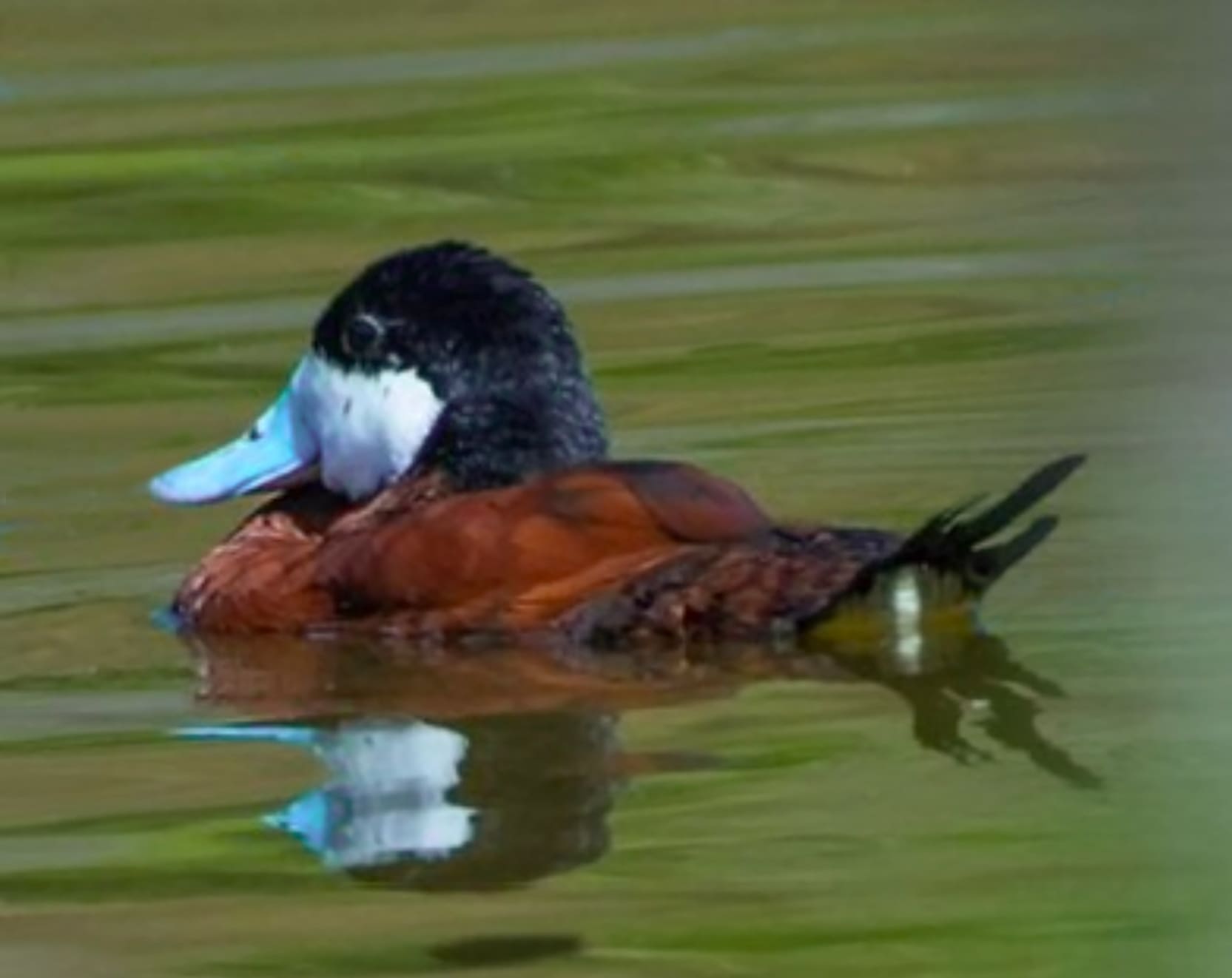
We also saw some of the ducks that live on St. John all year — the White-Cheeked Pintails. They are dabbling ducks that mostly pull vegetation off the bottom of the ponds. They can dive if necessary, but they mostly don’t like deep water. Many of them moved to shallower places during the height of the November heavy rains, but now more of them are showing up in Francis Bay.
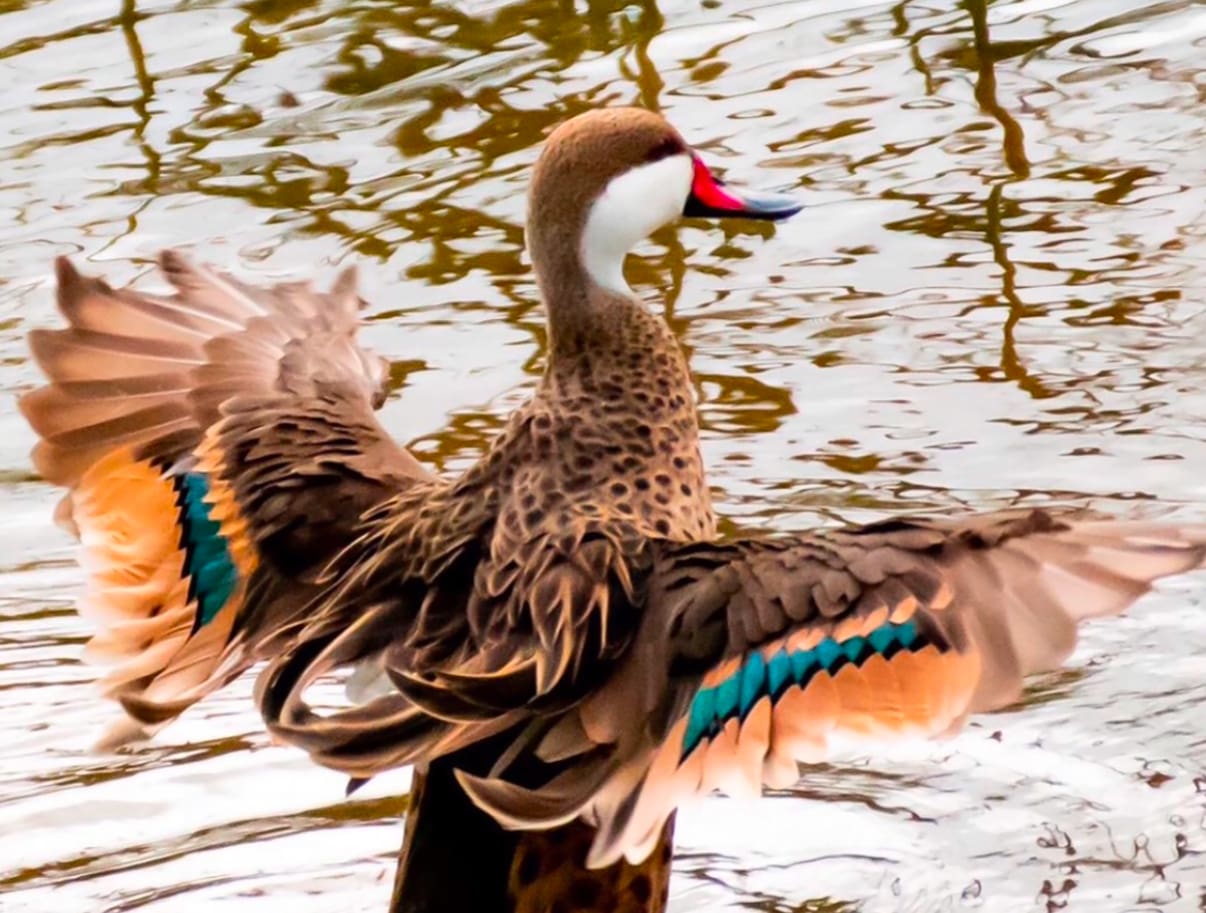
Along the shallow edges of the pond at Francis Bay we counted more Yellow-crowned Night Herons than usual. Maybe because we were looking earlier in the morning and they hadn’t finished eating. The night herons mostly roost in the mangroves during the day. Then in the evening and early morning they hunt for the big land crabs that live in deep muddy holes around the pond.
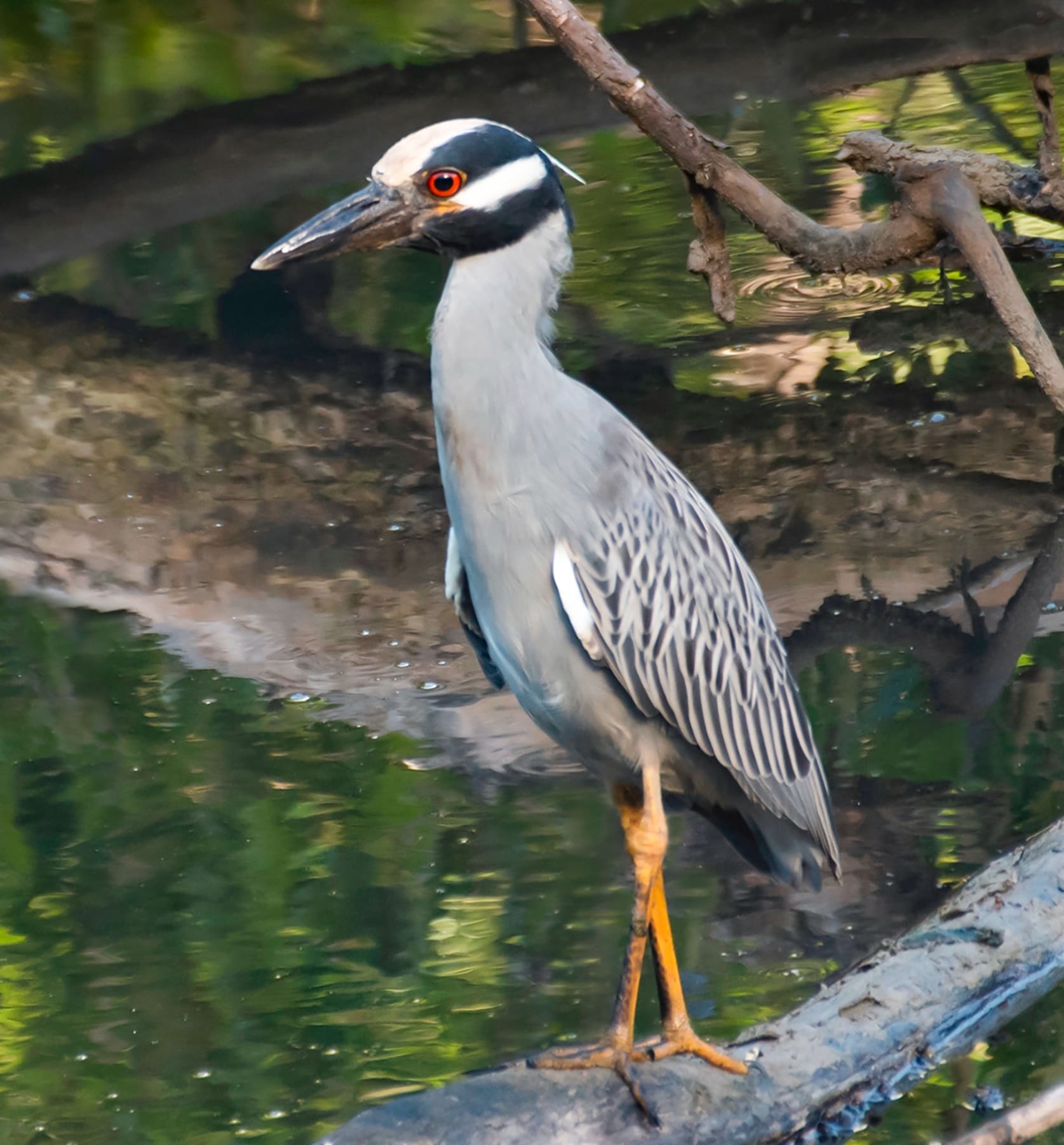
The young Yellow-crowned Night Herons are grayish with stripes on their chests and triangular white spots on their wings. They blend easily into the dense tree branches around the pond. However I recently saw one that was close to the road, easily visible as it grabbed some last bits of breakfast from a muddy, broken crab shell.
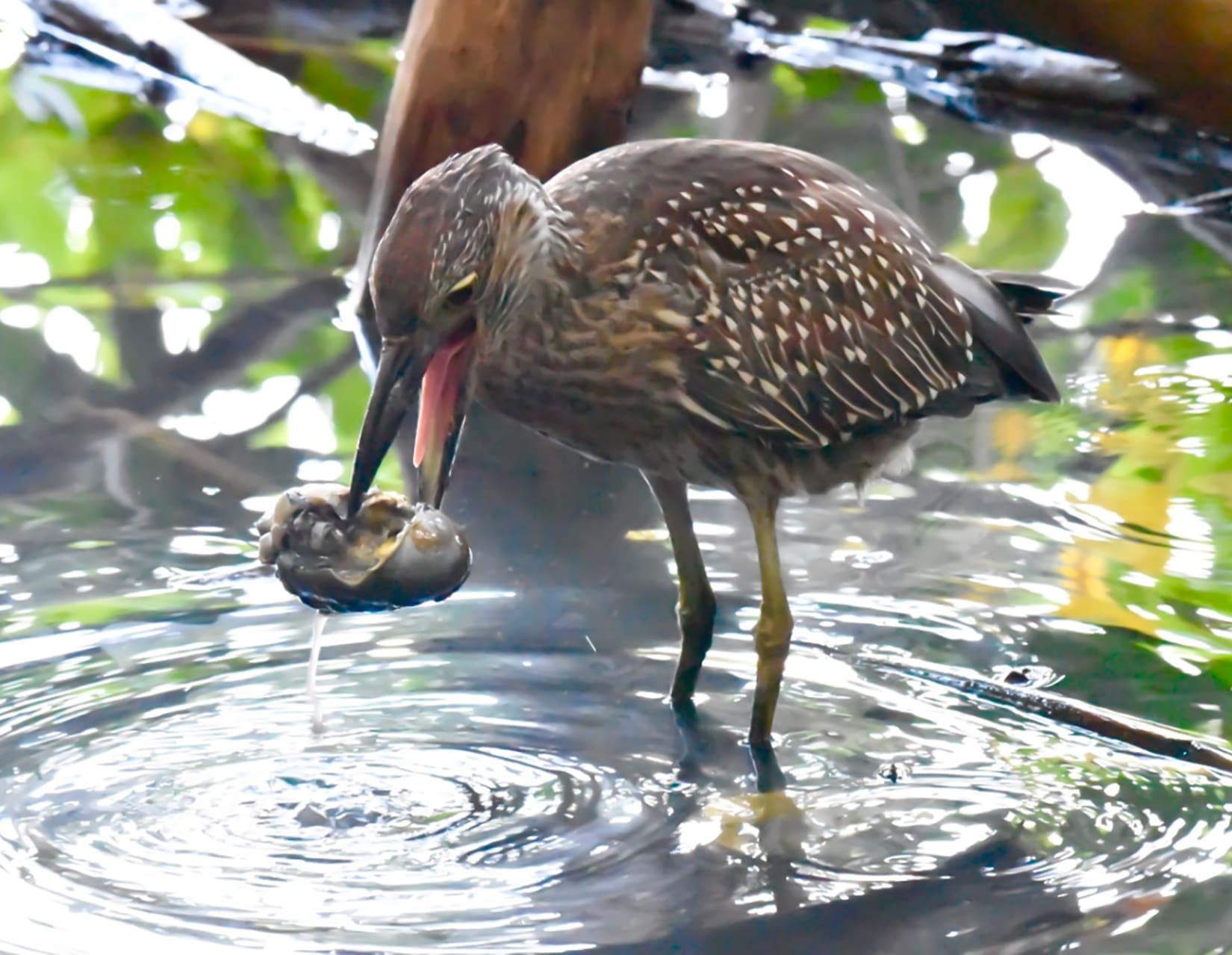
Laurel and I counted 33 different bird species around Francis Bay on December 14, 2024, the day of the island-wide count organized by the VI Audubon Society. That was a lot! There were 43 other people counting on St. John that same day and the overall bird total was 67 different species, about 1460 individual birds.
Meanwhile many thousands of bird lovers participate in local bird counts around the U.S. in late December. We all report our results to the National Audubon Society and help build a database for bird protection and conservation activities.
The most-counted bird on St. John this time was the Bananaquit (273). All the rain produced lots of flowers with nectar for them to eat, and people also often put out sugar for them.

Next highest was the Gray Kingbird (121). They are insect eaters, and we have had plenty of those around to feed them.
One promising new development was the presence of three American Flamingos that seem to have taken up residence on the south shore of St. John. Maybe they will form a permanent colony one day.
Meanwhile the lone Scarlet Ibis is still holding court in the Fish Bay ponds, often accompanied by a long-time close friend — a Snowy Egret.

Gail Karlsson is the author of a new photo booklet Looking for Birds on St. John, as well as two other books about nature in the Virgin Islands – The Wild Life in an Island House, and a guide book Learning About Trees and Plants – A Project of the Unitarian Universalist Fellowship of St. John. Follow her on Instagram @gailkarlsson and at gvkarlsson.blogspot.com.


